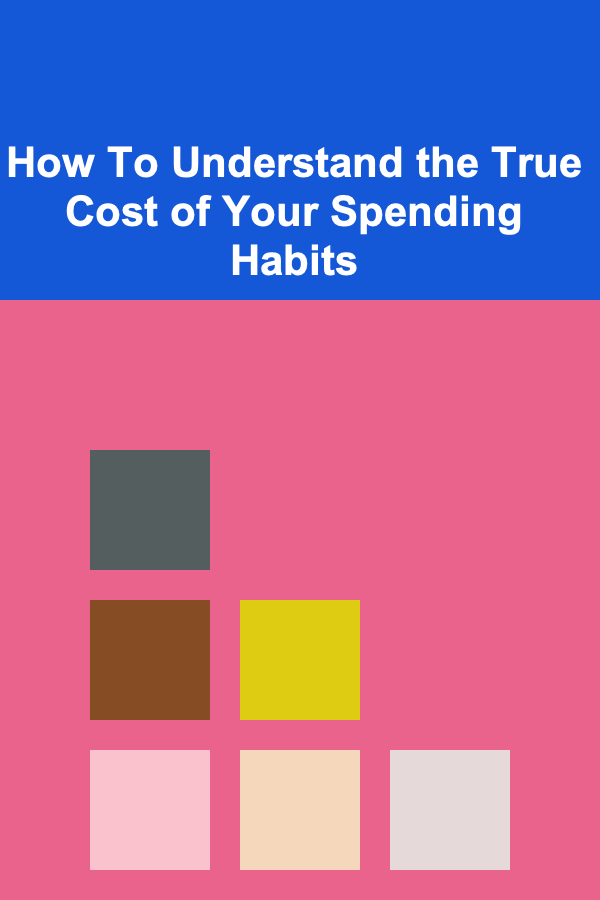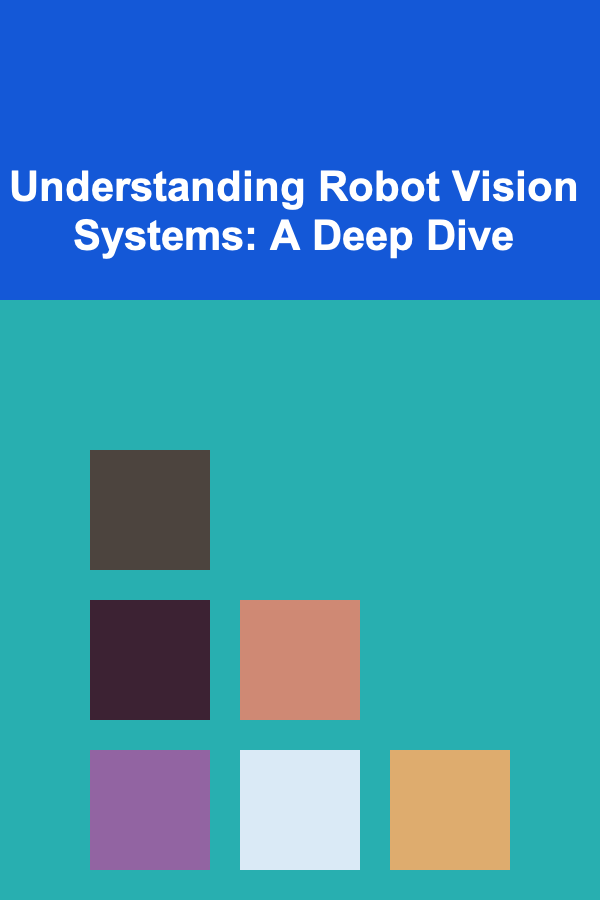
How To Understand the True Cost of Your Spending Habits
ebook include PDF & Audio bundle (Micro Guide)
$12.99$7.99
Limited Time Offer! Order within the next:

Understanding the true cost of your spending habits goes far beyond just looking at the numbers in your bank account. It involves looking at your expenses with a clear lens, understanding the impact of your financial decisions, and recognizing both the short-term and long-term consequences of how you manage your money. Whether you're struggling with budgeting, trying to achieve financial freedom, or simply curious about why your savings aren't growing as fast as they should, examining your spending habits is a critical step toward better financial health.
This article will guide you through the process of understanding the true cost of your spending habits, helping you gain deeper insight into your financial choices. From breaking down the psychological aspects of spending to understanding how your habits affect your financial future, this article covers the essential elements you need to reevaluate your financial life.
The Psychology Behind Spending Habits
Our spending habits are not purely logical decisions based on available income. They are deeply rooted in psychological triggers that influence how we spend money. To understand the true cost of your spending, it's essential to acknowledge these influences.
Emotional Spending
Many people spend money as a way of coping with emotions, whether they are feeling happy, sad, stressed, or anxious. Emotional spending can be linked to an immediate sense of gratification, but it often leads to regret once the emotions wear off. It may manifest as buying clothes you don't need after a rough day, indulging in expensive meals to lift your mood, or making impulsive purchases online as a way to feel better in the moment.
Social Influence
Social influence plays a significant role in our spending habits. This is particularly evident in the age of social media, where the pressure to maintain a certain lifestyle can drive unnecessary spending. Whether it's buying the latest gadgets, designer clothes, or extravagant vacations to keep up with what you see online, these external pressures can lead to financial strain. This social comparison can distort your true needs and make you believe that certain purchases are necessary when they are, in fact, optional.
Instant Gratification vs. Long-Term Satisfaction
One of the core psychological drivers behind spending is the desire for instant gratification. Humans are wired to seek immediate rewards, and this often conflicts with the more distant rewards of saving and investing. Spending on instant gratification can feel good in the short term but comes at the cost of long-term financial goals like retirement savings, homeownership, or financial freedom. Understanding the true cost involves weighing the immediate benefits of spending against the long-term satisfaction that comes from having a solid financial foundation.
Lifestyle Inflation
Lifestyle inflation occurs when your spending increases as your income grows. It's tempting to upgrade your living situation, buy a new car, or indulge in more expensive hobbies once you have more disposable income. However, this can quickly lead to financial trouble if you don't keep your spending habits in check. Even as your salary increases, failing to save and invest wisely will keep you from building wealth.
The Hidden Costs of Everyday Spending
Many everyday purchases seem small and insignificant at the time but can add up quickly and impact your financial health. Understanding the hidden costs of your spending habits is an essential part of tracking your true financial situation.
Small Purchases Add Up
We often overlook small purchases like coffee, snacks, lunch outings, or occasional treats. However, these seemingly innocent transactions can quickly snowball. For example, spending $5 every day on a coffee drink might not seem like much, but over the course of a month, that's $150. In a year, it's $1,800. These small amounts accumulate, often without us noticing, and can divert significant funds from more important financial goals like saving for an emergency fund or investing for retirement.
Subscription Services
We live in a subscription-based world where it's easy to sign up for services and forget about them. Streaming services, gym memberships, software subscriptions, and even monthly deliveries can add up over time. While each subscription might seem relatively small (for example, $10 or $20 per month), they can total hundreds of dollars annually. The true cost of these subscriptions is often hidden in the fact that we may not use them as frequently as we think, making it easy to justify keeping them without fully evaluating their value.
Impulse Purchases
Impulsive spending is another hidden cost that many people overlook. You may not have planned on buying something, but a sudden urge or sale promotion makes it hard to resist. These purchases can feel satisfying in the moment but often lead to buyer's remorse. They're driven by immediate emotions or external factors (like flash sales or time-limited discounts), which can cloud our judgment about whether we truly need the item.
Overdraft Fees and Interest Charges
Many people fail to realize how much they're spending on bank fees, late charges, or interest rates. If you regularly carry a credit card balance, the interest payments can be incredibly costly over time. In addition to interest, there are often fees associated with late payments, exceeding your credit limit, or overdrawing your account. These extra charges add up and eat into your savings, making it harder to achieve your financial goals.
The True Cost of Buying on Credit
Credit cards and loans are convenient financial tools, but they can come at a significant cost if not used responsibly. When you charge purchases to credit, you're not only paying for the product or service in question, but you're also taking on additional expenses in the form of interest and fees. Here's how:
Interest Rates
Credit cards can carry exorbitant interest rates, often ranging from 15% to 25% or more. This means that if you don't pay off your balance in full each month, you're essentially paying a high price for the privilege of borrowing money. The longer you carry a balance, the more interest you'll accrue, and the higher the true cost of your purchase becomes.
Debt Accumulation
When you consistently carry a balance on your credit card, it can lead to a cycle of debt. You might make minimum payments to avoid late fees, but those payments often go mostly toward interest rather than the principal balance. This can lead to mounting debt that becomes harder to pay off over time, draining your finances and limiting your ability to save.
Psychological Effects of Debt
Carrying credit card debt or loans can have a psychological toll. The stress and anxiety of knowing that you owe money can prevent you from enjoying your life and achieving your financial goals. This stress can further affect your spending habits, creating a vicious cycle of overspending and debt accumulation.
The Long-Term Consequences of Poor Spending Habits
While poor spending habits may not seem like a big deal in the short term, they can have significant long-term consequences. The true cost of these habits becomes apparent when you consider the impact they have on your future.
Missed Opportunities for Saving and Investing
When you spend excessively, you forgo opportunities to save and invest. For example, if you spend an extra $1,000 each month on non-essential items, that's $12,000 per year that could have been invested in a retirement account, stocks, or real estate. Over time, the compound growth of investments could significantly improve your financial position.
Retirement Savings
Many people fail to prioritize retirement savings because they're focused on short-term gratification. The true cost of this behavior becomes clear when you consider how much money could have been accumulated by consistently contributing to retirement accounts like a 401(k) or IRA. By the time you realize the importance of saving for retirement, it may be too late to catch up.
Debt
Failing to control your spending can lead to accumulating debt, whether from credit cards, personal loans, or student loans. Debt not only hinders your ability to build wealth, but it also incurs interest charges and fees, making it even harder to pay off in the future. The longer you carry debt, the higher the cost becomes, both financially and psychologically.
Reduced Quality of Life
Ultimately, poor spending habits can result in a reduced quality of life. Financial stress can affect your health, relationships, and overall happiness. Constantly worrying about money can prevent you from enjoying life's simple pleasures, like spending time with loved ones, pursuing hobbies, or traveling.
Strategies to Improve Your Spending Habits
Understanding the true cost of your spending habits is the first step toward financial freedom. Once you have a clearer picture of how your habits affect your financial life, you can implement strategies to improve them.
Create a Budget
One of the most effective ways to gain control over your spending is by creating a budget. A budget helps you track your income and expenses, making it easier to identify areas where you can cut back. By setting limits for various categories (e.g., food, entertainment, transportation), you can ensure that your spending aligns with your financial goals.
Focus on Needs vs. Wants
Distinguishing between needs and wants is crucial for controlling spending. Needs are essential for survival, like housing, food, and healthcare, while wants are non-essential items that we desire. By focusing on fulfilling your needs first, you can reduce unnecessary spending and allocate more funds toward savings and investments.
Automate Savings
One of the most effective ways to ensure that you're saving regularly is by automating your savings. Set up automatic transfers from your checking account to a savings or investment account each month. This makes saving effortless and ensures that you're consistently building your financial foundation, regardless of how tempting it may be to spend that money elsewhere.
Avoid Impulse Purchases
To avoid impulse purchases, create a cooling-off period for yourself. If you're considering a non-essential purchase, give yourself 24 to 48 hours to think it over. More often than not, the urge to buy will subside, and you'll realize that the item wasn't truly necessary.
Track Your Spending
Keeping track of every dollar you spend can be an eye-opening exercise. Use a budgeting app, spreadsheet, or simple notebook to track your daily, weekly, and monthly expenses. This practice will help you see where your money is going and make it easier to identify areas for improvement.
Conclusion
Understanding the true cost of your spending habits is essential for achieving financial health and long-term success. By examining the psychological factors that influence your spending, recognizing the hidden costs of everyday purchases, and considering the long-term consequences of your choices, you can gain better control over your finances. By making intentional decisions about your money and implementing strategies to improve your habits, you can build a more secure and fulfilling financial future.

How to Choose the Best Countertops for Your Kitchen Renovation
Read More
How to Create a Cozy Reading Nook in Your Personal Library
Read More
How to Organize a Pet-Friendly Kitchen for Safety and Convenience
Read More
How to Use Acoustic Panels to Soundproof Your Home
Read More
How to Start a Cleaning Service Business
Read More
Understanding Robot Vision Systems: A Deep Dive
Read MoreOther Products

How to Choose the Best Countertops for Your Kitchen Renovation
Read More
How to Create a Cozy Reading Nook in Your Personal Library
Read More
How to Organize a Pet-Friendly Kitchen for Safety and Convenience
Read More
How to Use Acoustic Panels to Soundproof Your Home
Read More
How to Start a Cleaning Service Business
Read More